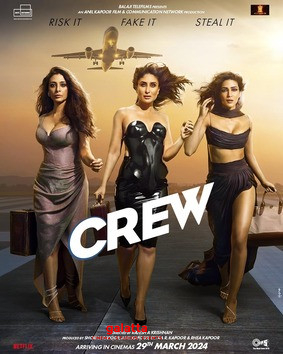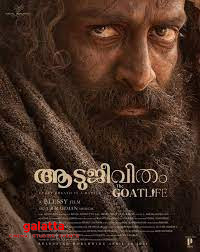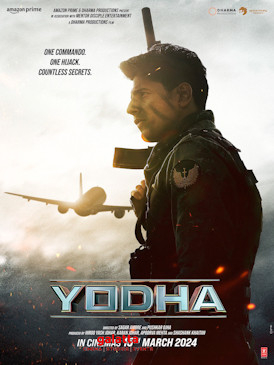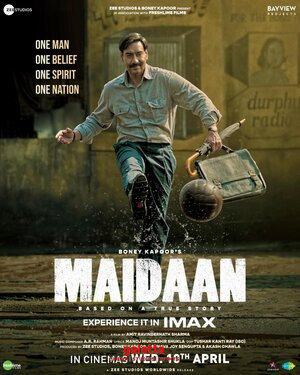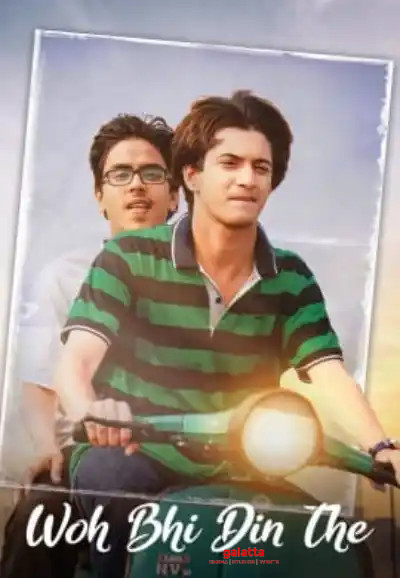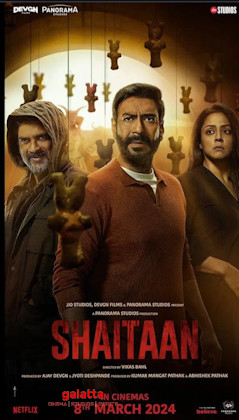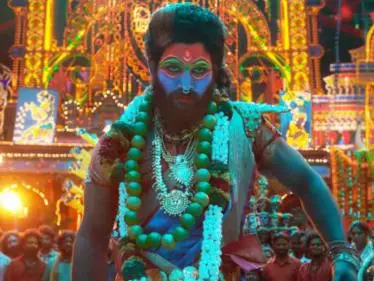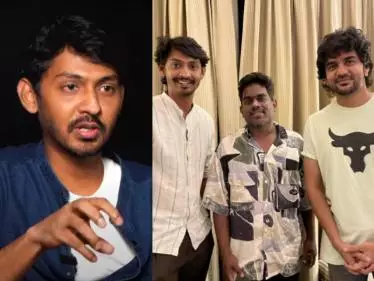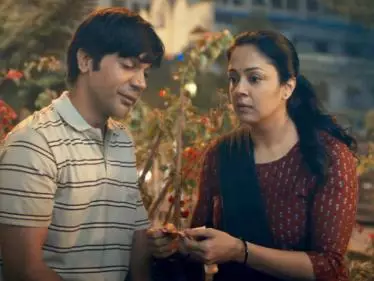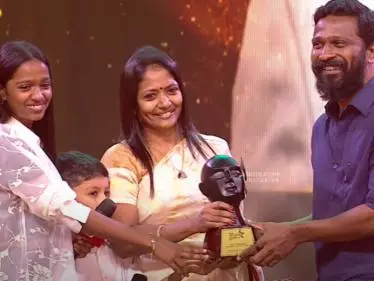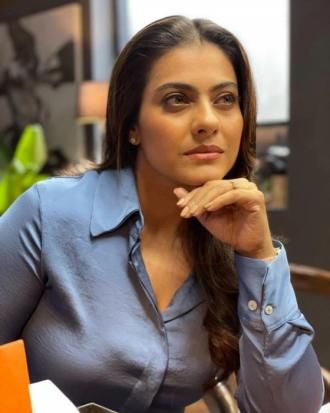Amar Singh Chamkila Movie Cast & Crew
In Amar Singh Chamkila, Imtiaz Ali gives us two films for the price of one. The first – more obvious – narrative follows the shape of a biopic, the life and times of the “Elvis of Punjab”, played by Diljit Dosanjh. That nickname, as we come to see, isn’t just about the massive popularity Chamkila enjoyed in his lifetime. This is the 1980s, and he outsells Amitabh Bachchan in a live show. But here’s the other layer. Just like Elvis was accused of corrupting young America with dance moves resembling those of a male striptease artist and songs whose erotic energy was even wilder, Chamkila was frequently hauled up by cultural gatekeepers for his sexually charged lyrics. Irshad Kamil, who outdoes himself in the soundtrack, writes these words for Chamkila’s detractors: “ganda sa banda hai / social darinda hai”! The rise and fall of a musician who brought joy to the masses, and the question whether art ought to be censored for those very masses – these two layers come together magnificently in this movie.
The film opens with much excitement, as Punjab’s most famous Ambassador car is sighted by a wedding party: they have commissioned a music performance by Chamkila and his wife Amarjot, played by Parineeti Chopra. And from then on, Imtiaz (who co-wrote the screenplay with Sajid Ali) and his brilliant editor Aarti Bajaj do their trademark thing. We get small (sometimes micro) scenes that get to the heart of the emotion in a heartbeat, and these small scenes come together like pieces in a colourful quilt. The film uses the assassination of Chamkila and Amarjot as a pivot point, and keeps going back and forth in time. There appear to be many suspects: fundamentalists, militants who rose in influence after Indira Gandhi was shot dead, rival singers, loyalists that Chamkila abandoned along the way – but this is not a lazy “who did it?” murder mystery. The real question is: Who was this man?
This decision to talk about Chamkila after his killing gives the sense of the man still being alive after death, as though people could not stop talking about him. It’s like he is very much in the present even after he has become a part of the past. Put simply, it’s the idea of immortality. And the writing and editing juxtapose faces and events with such nimbleness that we are never in doubt about who is who even though we (at least, those of us unfamiliar with Chamkila) are faced with a host of unknown names and faces. I’ll give you an example. Early on, we see a singer named Jinda in broad daylight, on stage with Chamkila. CUT TO: we get a profile shot of Jinda at night, as he adds his two bits about who Chamkila was, from his point of view.
The film, thus, isn’t a definitive portrait. Rather, like a folk story passed on through the oral tradition, it is a collection of these orally narrated points of view that give us different facets and dimensions of a beloved but controversial man. At times, Chamkila himself becomes a narrator of his life. There is a great bit where he sits down to eat and appears displeased that the roti is cold. You think the scene is about one emotion, but it quickly turns into another – and we get the feeling that perhaps it is not possible to fully know this man. In another brilliant scene, Chamkila’s father shouts at him for cutting his hair and disrespecting Sikhism, but Chamkila calmly hands over a bundle of money and the old man quiets down. As always, money solves all problems. But what were Chamkila’s own feelings about his religion? That we may never get to know.
What has survived, what we know for sure, is the music – and AR Rahman hits it out of the park. The soundtrack album is superb, as is the background score. Imtiaz and Rahman fill the narrative with silences, so that we really feel and register the emotion when instruments make themselves heard behind the action: when an acoustic guitar is heard during a conversation outside a police station, when a sitar is heard as Chamkila talks to Amarjot alone for the first time, when a flute and strings are heard when Chamkila confronts another woman in his life, or when a dramatic whiplash is heard when militants enter Chamkila’s home. In a sense, Rahman’s score grows over the course of the film. The first time we see the assassination, it’s in total silence. When the same scenario is replayed at the end, we get a big orchestral score. The first time, the man is a stranger. The second time, we have come to know him to the extent that we can – so the emotion produced by the big score is truly earned. This is the rare movie that does not use its background score as a blunt instrument to pound the audience into emotional submission.
There are scenes where we crave to know more about the emotional logic. Why did Chamkila leave the first woman in his life before marrying Amarjot? Why did Chamkila abandon his loyal manager before going to perform in Canada? This unknowability is emphasised with a series of distancing devices. For one, there are the photographs of the real-life Chamkila and Amarjot. Most biopics seek to maintain the illusion that the actors playing the subjects of the story are really the real people – and maybe at the end, over the credits, we may get reminders of those real people. But Imtiaz destroys this notion by constantly going back to pictures of the real Chamkila, the real Amarjot, even as Diljit and Parineeti are playing Chamkila and Amarjot on screen.
Amar Singh Chamkila keeps playing with form. Whenever we listen to performances, we hear the songs in Diljit’s and Parineeti’s own voices – so there is no dissonance between the voices they speak in and the voices they sing in. But when an inner emotion is underlined (as opposed to those external performances), we get Rahman’s songs with playback singers like Mohit Chauhan, Arijit Singh, Alka Yagnik, and Jonita Gandhi. The original Punjabi lyrics are maintained in the live shows, but for those of us who don’t know the language we get Hindi equivalents of some lines – but these Hindi words are written in English. (If you are watching the film with subtitles, there is an additional distancing layer, because now you are reading the English equivalents of those lyrics.) Apart from the music, we get split screens designed like two squares on a film strip, we get animation, and when we see love bloom from Amarjot’s point of view, we get flares on the borders of the frames, like those old films where the edges of the camera were blurred out with Vaseline. Sylvester Fonseca is the cinematographer, and this is one of the rare instances we see something flashy. Otherwise, he leads us through the story with the practised casualness of turning the pages of a book.
A lot of Amar Singh Chamkila is a familiar story, but the individual scenes and the actors are so good that they reinvent the broad beats – like in the bit where Chamkila and his manager hear a record playing his song and run in search of it. They find the store where the record is being played, and Diljit fingers his moustache with a small smile. He’s proud, but the gesture makes it a muted kind of pride. When he makes a reference to his Dalit roots – “Chamar hoon par bhookha nahin maroonga” – his anger is muted. Even his business sense is muted. When he meets Amarjot, he says he does not need to hear her sing because someone he trusts has vouched for her. The innocence and naïveté in Diljit’s utterly captivating performance makes Chamkila someone you root for all the way, and Parineeti, too, nicely underplays her part. On stage, she keeps looking down, as though she doesn’t want to see audiences looking at her while she is singing those songs.
So why did these two people sing those songs? One plausible reason is that Chamkila had no pretences or filters, and he simply wrote the way people spoke, or simply said the things most people thought in private but would not say in public. After all, look at how the DSP speaks to his fawning subordinate: “Itna bhi makhkhan na lagao ki andar haath ghus jaaye.” Look at how women (in the song Naram kaalja) objectify a man’s organ: “Chhoti si aari leke tu kya kaatega jangal.” Look at the lewd lines sung at weddings. Even when Chamkila tries to change his image and make a devotional album (that, too, became a blockbuster), the masses want him to sing the songs that made him a star: because they need to laugh amidst their troubles, and for them, this is a valid form of entertainment.
And this is what Chamkila says to a posh, jeans-wearing reporter who says he objectifies women in his songs. He does not deny that he does. But he also says, “Chhote log yehi pasand karte hain…” And by “chhote log”, he means those who are not privileged, he means the masses. The privileged people and the prudes and the conservatives complain – especially after Indira Gandhi’s death – that people are dying, and here this man is singing songs that go: “Jijaji meri kamar ka naap le lo.” Is it… appropriate? But it is at these dark times that people need entertainment, and who is to tell them what the “appropriate” form of entertainment is? Some of the older members in the audience may remember the cultural tug-of-war that erupted when “Choli ke peeche kya hai” became a blockbuster, and when Govinda and Karisma Kapoor nearly dislodged their pelvises gyrating to “Sarkailo lyo khatiya jaada lage.” Both films – Khalnayak and Raja Babu – were blockbusters. In other words, the “chhote log”, the masses lapped them up.
It is the same conflict that was explored in Miloš Forman’s, The People vs. Larry Flynt, based on the man who published the pornographic Hustler magazine. If there is such a thing as freedom of expression, then should there be cultural gatekeepers or should people be left to self-censor what they want and don’t want to read or see or hear? Imtiaz does not attempt to answer this question directly, which is how it should be. This question has no definitive answer. It is how each individual responds to the issue – so Imtiaz just puts up both sides and leaves it for us to decide. Chamkila says, “Why am I being targeted when other singers sing such songs, too?” Could it be jealousy? Or is it that the most popular one becomes the most sought after when you want to set an example and “do good for society”.
But, indirectly, at least, Imtiaz lets us see where his sympathies lie. He is for Chamkila, and against cultural censorship. The film gives us “logical” explanations – for example, that Chamkila’s caste-mentality never really went away, that he remained a “slave” of the audience, giving them what they wanted. Another “logical” explanation we are given is that he has risen from rags to riches, and he cannot return to where he came from. Chamkila tells Amarjot that let’s make money first, “phir aaram se sochenge kya sahi hai aur kya galat.” But “emotionally” speaking, Chamkila comes off like a martyr for a cause, because of the grand eulogy Rahman gifts him: “Vida karo”. The beautifully penned words mask the sarcasm that drips through the song: “Let me go, because a dirty man like me does not deserve to be in your world of pure people.” “Tum sabhi saaf sahi / hoon matmela main…” The moving song breaks your heart, and makes you wonder what art is, and who gets to decide how it is practised or how people choose to entertain themselves. In this age of social media and rampant armchair-activism, Amar Singh Chamkila raises important questions. And yes, it is also a beautiful film.


